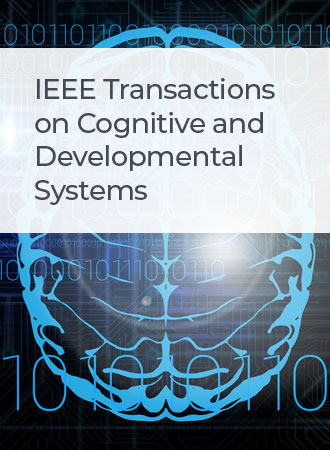TR-TransGAN: Temporal Recurrent Transformer Generative Adversarial Network for Longitudinal MRI Dataset Expansion
IF 5
3区 计算机科学
Q1 COMPUTER SCIENCE, ARTIFICIAL INTELLIGENCE
IEEE Transactions on Cognitive and Developmental Systems
Pub Date : 2024-01-08
DOI:10.1109/TCDS.2023.3345922
引用次数: 0
Abstract
Longitudinal magnetic resonance imaging (MRI) datasets have important implications for the study of degenerative diseases because such datasets have data from multiple points in time to track disease progression. However, longitudinal datasets are often incomplete due to unexpected quits of patients. In previous work, we proposed an augmentation method temporal recurrent generative adversarial network (TR-GAN) that can complement missing session data of MRI datasets. TR-GAN uses a simple U-Net as a generator, which limits its performance. Transformers have had great success in the research of computer vision and this article attempts to introduce it into longitudinal dataset completion tasks. The multihead attention mechanism in transformer has huge memory requirements, and it is difficult to train 3-D MRI data on graphics processing units (GPUs) with small memory. To build a memory-friendly transformer-based generator, we introduce a Hilbert transform module (HTM) to convert 3-D data to 2-D data that preserves locality fairly well. To make up for the insufficiency of convolutional neural network (CNN)-based models that are difficult to establish long-range dependencies, we propose an Swin transformer-based up/down sampling module (STU/STD) module that combines the Swin transformer module and CNN module to capture global and local information simultaneously. Extensive experiments show that our model can reduce mean squared error (MMSE) by at least 7.16% compared to the previous state-of-the-art method.TR-TransGAN:用于纵向磁共振成像数据集扩展的时序递归变换生成对抗网络
纵向磁共振成像(MRI)数据集对退行性疾病的研究具有重要意义,因为这类数据集拥有多个时间点的数据,可以追踪疾病的进展。然而,纵向数据集往往因患者意外退出而不完整。在之前的工作中,我们提出了一种增强方法--时序递归生成对抗网络(TR-GAN),可以补充核磁共振成像数据集缺失的会话数据。TR-GAN 使用简单的 U-Net 作为生成器,这限制了它的性能。变换器在计算机视觉研究中取得了巨大成功,本文试图将其引入纵向数据集完成任务中。变换器中的多头注意力机制对内存的要求很高,很难在内存较小的图形处理器(GPU)上训练三维核磁共振成像数据。为了建立一个内存友好的基于变换器的生成器,我们引入了希尔伯特变换模块(HTM),将三维数据转换为二维数据,从而很好地保留了局部性。为了弥补基于卷积神经网络(CNN)的模型难以建立长程依赖关系的不足,我们提出了基于斯温变换器的上下采样模块(STU/STD),该模块结合了斯温变换器模块和 CNN 模块,可同时捕捉全局和局部信息。广泛的实验表明,与之前最先进的方法相比,我们的模型可以将均方误差(MMSE)至少降低 7.16%。
本文章由计算机程序翻译,如有差异,请以英文原文为准。
求助全文
约1分钟内获得全文
求助全文
来源期刊

IEEE Transactions on Cognitive and Developmental Systems
Computer Science-Software
CiteScore
7.20
自引率
10.00%
发文量
170
期刊介绍:
The IEEE Transactions on Cognitive and Developmental Systems (TCDS) focuses on advances in the study of development and cognition in natural (humans, animals) and artificial (robots, agents) systems. It welcomes contributions from multiple related disciplines including cognitive systems, cognitive robotics, developmental and epigenetic robotics, autonomous and evolutionary robotics, social structures, multi-agent and artificial life systems, computational neuroscience, and developmental psychology. Articles on theoretical, computational, application-oriented, and experimental studies as well as reviews in these areas are considered.
文献相关原料
| 公司名称 | 产品信息 | 采购帮参考价格 |
|---|
 求助内容:
求助内容: 应助结果提醒方式:
应助结果提醒方式:


